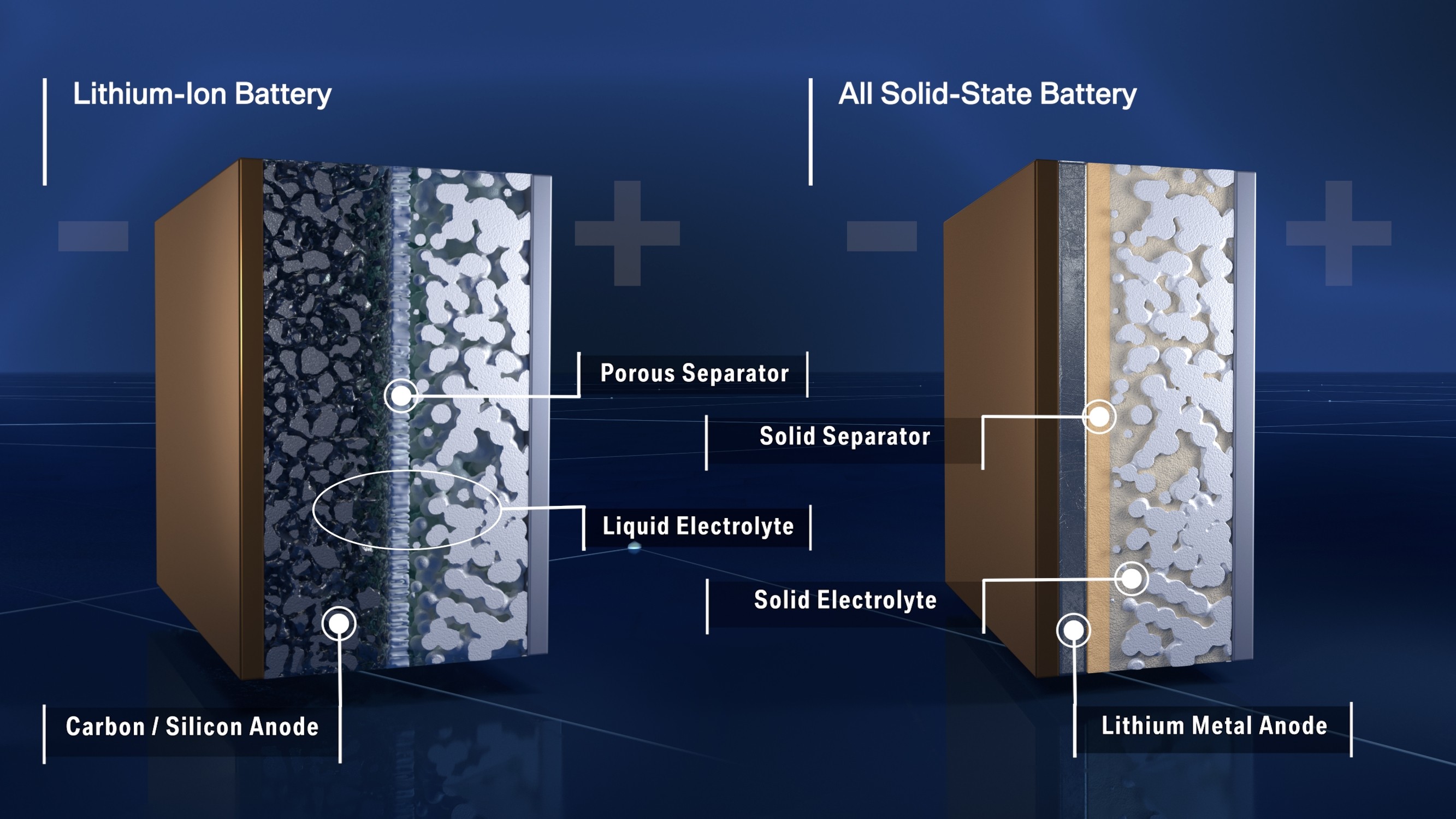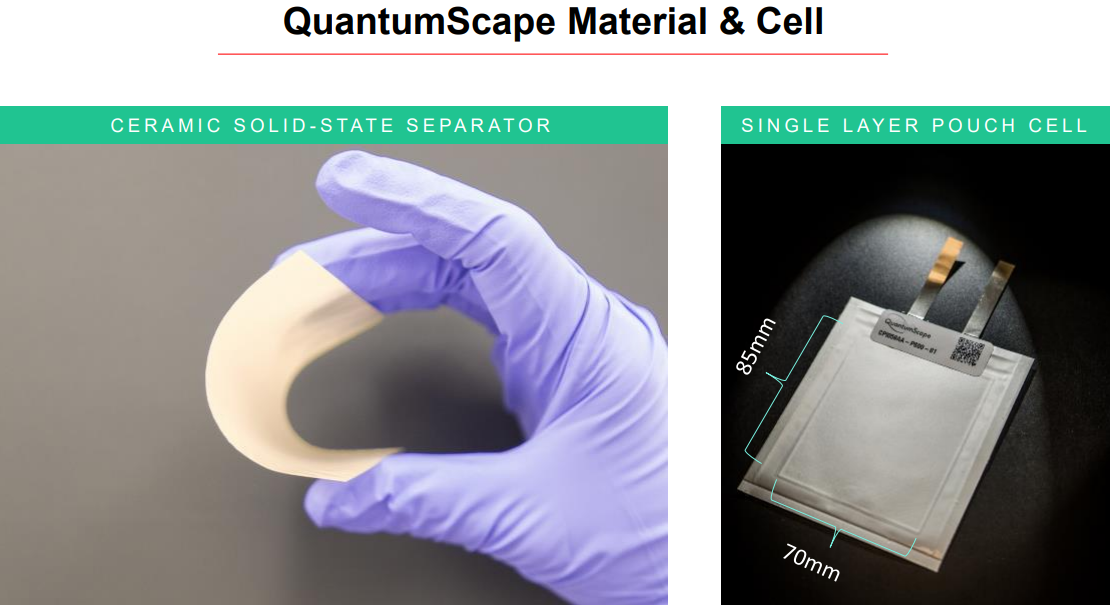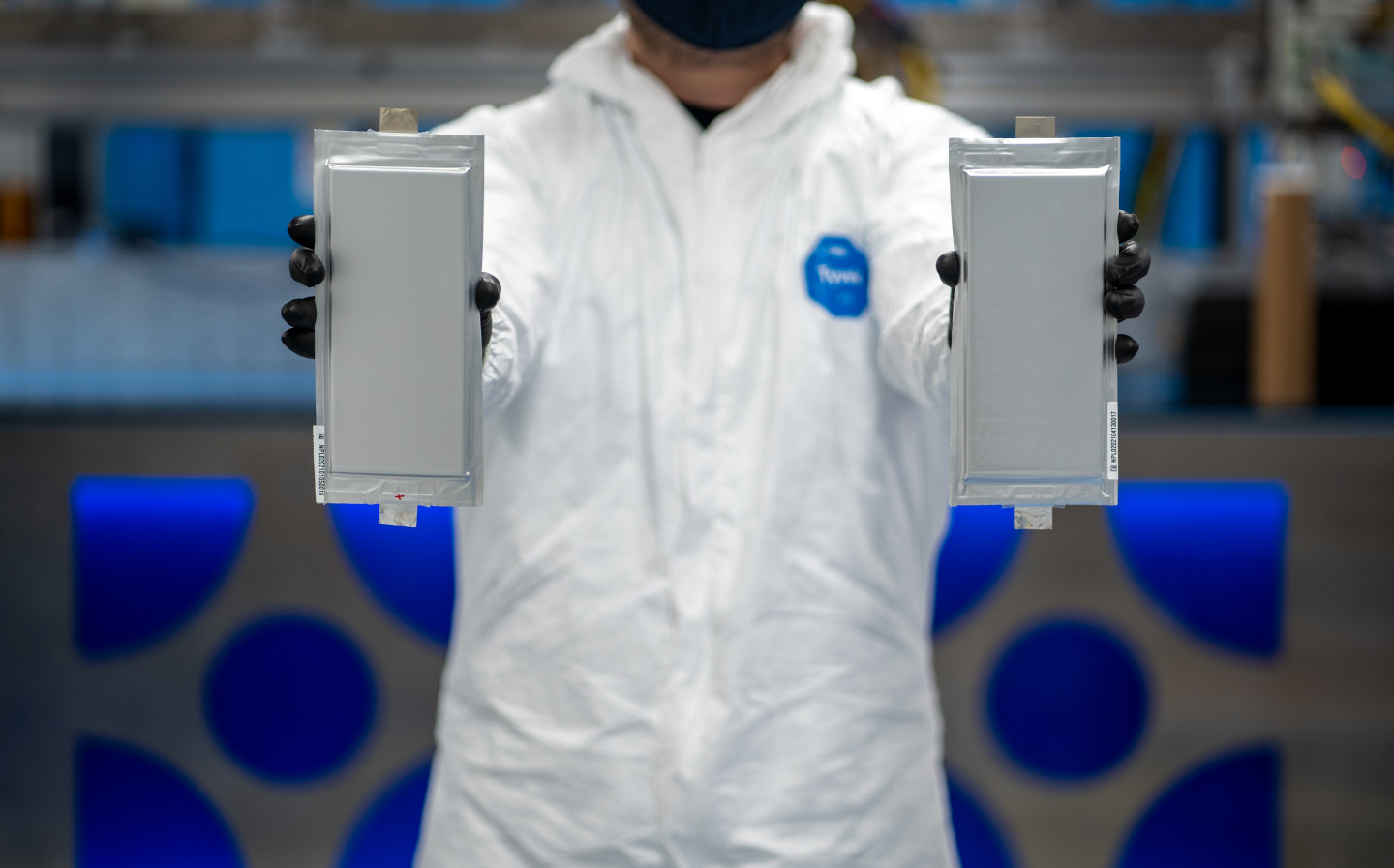Electric cars: What are solid-state batteries?
The 'holy grail' of electric motoring explained
AS THE UK and several other countries approach deadlines that ban the sale of new petrol and diesel cars, manufacturers are trying to figure out how to squeeze the most energy out of their batteries, at the lowest price and weight. Solid-state batteries (SSBs) are seen as the next leap in technology, with many benefits over the current lithium-ion chemistry.
BMW and Ford have both been linked to a $130m (£91.9m) investment in start-up SSB manufacturer Solid Power, and the car makers announced joint development agreements with the company; the aim being to produce SSB cars by the middle of this decade.
Volkswagen Group, meanwhile, has plunged a massive $300m (£212m) into another start-up, QuantumScape, which the German conglomerate hopes will result in industry-beating cars a year earlier, in 2024. Toyota, the world’s largest car maker, has more than 1,000 patents relating to SSBs, and will reportedly unveil a prototype as early as next year.
It was also believed that the now-abandoned Dyson car would have made use of SSB technology, although the working prototype revealed by James Dyson to The Sunday Times last year used a lithium-ion unit.
But what exactly is this “holy grail” technology that car makers are racing to perfect, and how much benefit can it bring?
What are solid-state batteries?

Lithium-ion batteries, currently used widely in the manufacture of electric cars, consist of a carbon anode (a negative electrode) and a cathode (a positive electrode) with a porous separator between them. A liquid electrolyte in the battery allows the flow of lithium ions between the anode and cathode. When the battery is charging up, lithium ions move through the electrolyte to the anode and remain there, storing energy. When the battery discharges, the lithium ions move back across the electrolyte to the cathode, releasing the energy to power the car. Meanwhile, electrons flow in the opposite direction to the ions, around the electrolyte rather than through it.
Solid state batteries, meanwhile, replace the carbon anode with a lithium one. These types of batteries are known as lithium-metal, rather than lithium-ion. A layer of lithium ions is deposited on the anode during charging, which then dissolves through the battery when engaged, creating power.
They’re not new but they haven’t been introduced commercially as using a liquid electrolyte is dangerous, and finding a solid electrolyte and separator with the same level of conductivity as the liquid electrolyte has been difficult. QuantumScape announced success on that front with a ceramic-based material late last year.
What are the benefits of solid-state batteries?
The advantages of SSBs compared to lithium-ion batteries are numerous. For one, they are around three times more energy dense, so you can fit a smaller pack to a car for the same amount of energy. This means one of the major downsides of electric cars today — their weight versus petrol and diesel — is reduced.
In addition, replacing the carbon anode with a lithium one makes them quicker and easier to make, and that should bring down the cost of the battery. (Although SSBs are currently more expensive than lithium-ion batteries due to the fact that they’re not manufactured in large volumes.)
Another much discussed risk of modern electric cars is safety. In general, EVs are thought to pose no bigger safety risk than petrol or diesel cars, but they have found themselves in headlines numerous times due to batteries catching fire — in 2021 alone, Hyundai has been forced to recall 82,000 Kona Electric SUVs after it was reported that 15 caught fire, and authorities were reportedly forced to call Tesla for advice after finding themselves unable to extinguish a blaze that killed two people. Lithium-ion battery fires are hard to extinguish, and are know to spark and reignite after the fire seems to have been brought under control. Solid-state batteries are less flammable than lithium-ion ones due to the elimination of liquid electrolytes.

What’s more, solid state batteries have a longer lifespan than lithium-ion ones. QuantumScape claims its single layer batteries are able to hold 90% of their charge after 1,000 charging cycles, which on a battery with a 300-mile range equates to 300,000 miles.
Charging time is also reduced. QuantumScape claims its 300-mile battery can charge from empty to 80% in just 15 minutes, which is roughly twice as fast as an equivalent Tesla battery using the latest Tesla Superchargers.
The main benefit for drivers, though, is how far the cars will be able travel per charge. QuantumScape says its batteries will be able to travel 80% further than lithium-ion ones, and perform better in extreme cold temperatures.
Tweet to @ST_Driving Follow @ST_Driving
- After reading about solid-state batteries, you might be interested that a new report has found that widespread electric car battery recycling could lower the need to mine some earth metals by as much as 55%.
- A Tesla supplier is working on a nickel-free battery.
- James May recently wrote the best hydrogen vs battery-electric car summary we’ve ever read.





